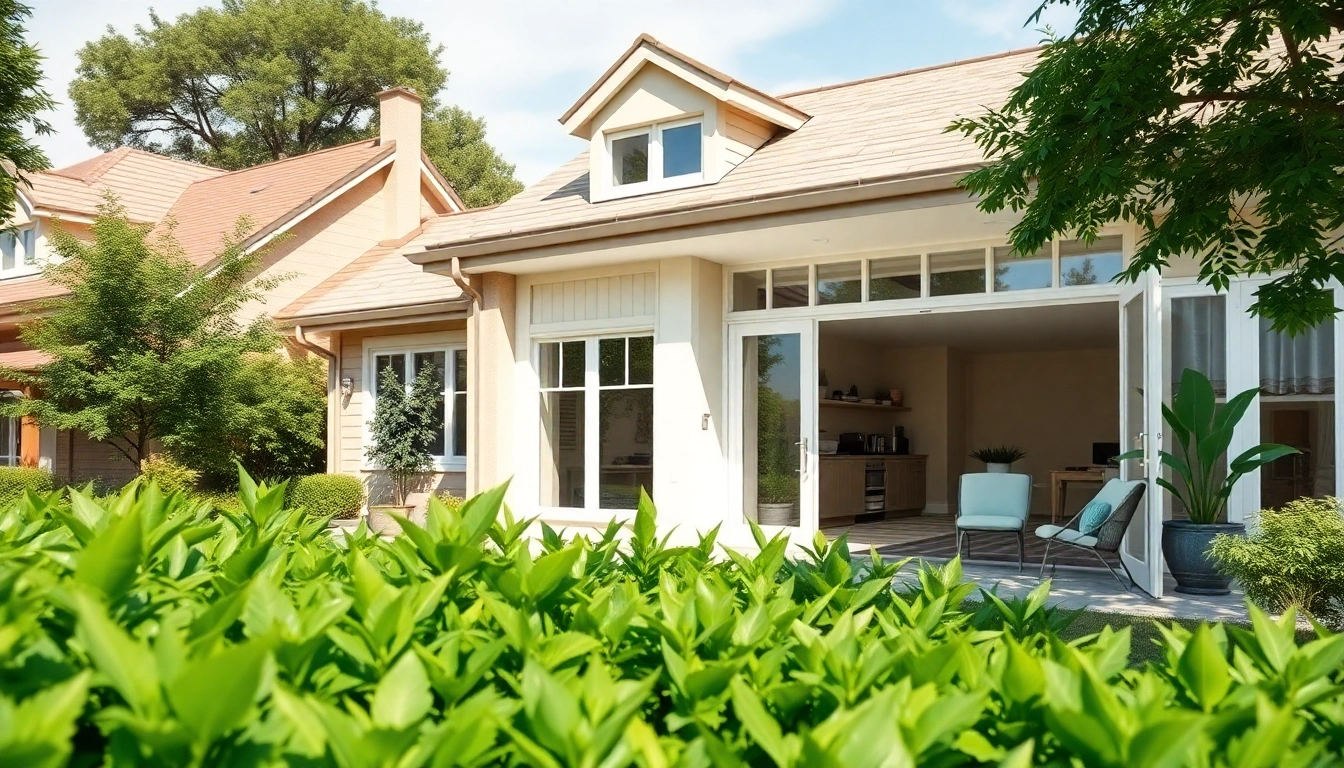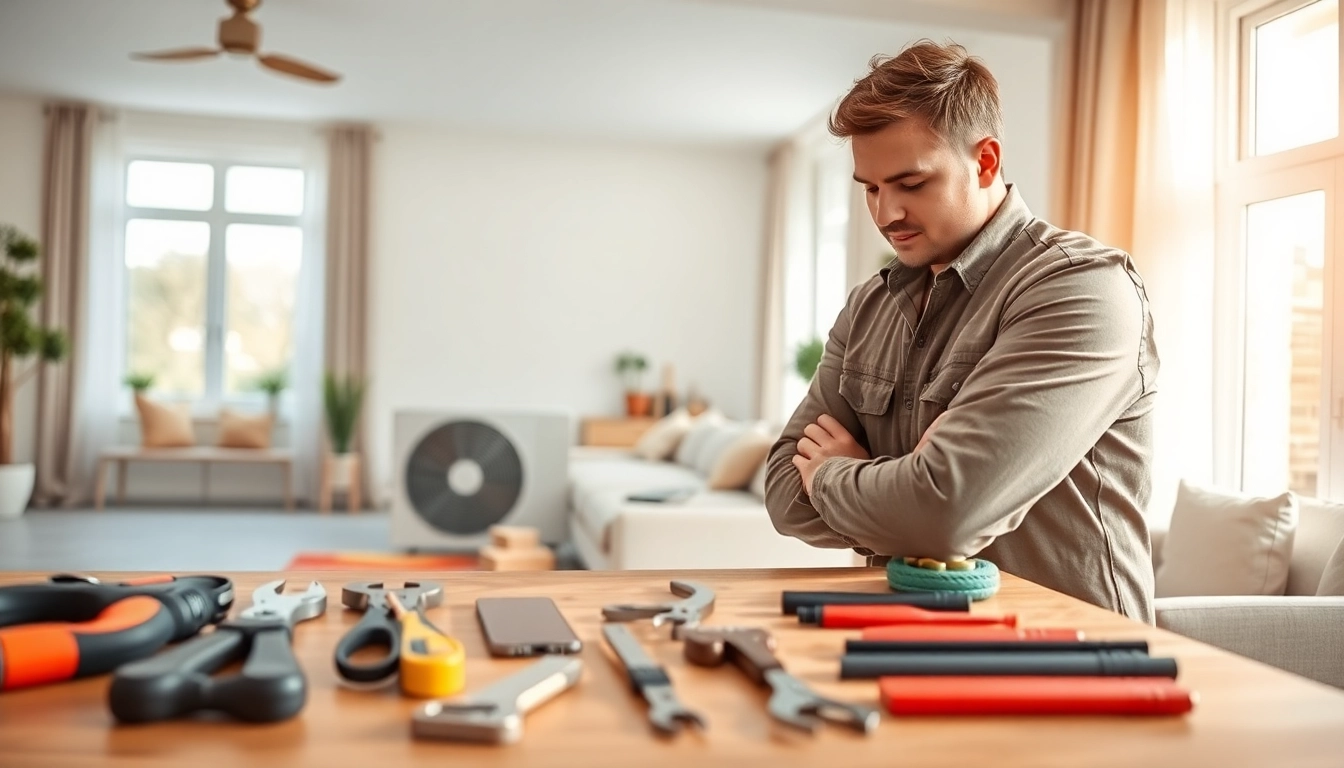Introduction to the Best Smart Home Gadgets
The smart home revolution is upon us, transforming the way we live, work, and interact with our surroundings. From smart speakers to thermostats, the array of best smart home gadgets has expanded rapidly, making homes more secure, efficient, and convenient than ever before. As we dive deeper into the world of smart technology, it is important to understand what these devices can offer and how they are reshaping our everyday lives.
Understanding Smart Home Technology
Smart home technology is characterized by its ability to automate tasks and improve connectivity throughout your home. These devices can interact with each other through a centralized hub or platform, allowing users to control multiple aspects of their household from a single interface. They communicate over Wi-Fi, Bluetooth, or other wireless protocols, facilitating seamless integration and interaction. The benefits? Enhanced convenience, efficiency, and control over your living environment.
Importance of Smart Home Gadgets
The significance of smart home gadgets lies not just in their novelty, but in the substantial advantages they provide. They help streamline daily routines, enhance security, and improve energy efficiency. For instance, smart lighting can automatically adjust based on time of day or occupancy, reducing unnecessary energy usage. Security systems enable remote monitoring, offering peace of mind when away from home. Ultimately, these gadgets contribute to a sustainable and more manageable lifestyle.
Key Trends in Smart Home Devices
2025 is predicted to be a pivotal year in smart home evolution, moving beyond basic functionalities. Key trends include increased interconnectivity among devices, enhanced AI capabilities, and a strong emphasis on energy efficiency. Furthermore, there’s a growing commitment to sustainability with the rise of eco-friendly gadgets that monitor consumption patterns and reduce waste. Consumer demand is shifting towards devices that not only fulfill needs but also align with a broader sustainability ethos.
Top Categories of Smart Home Gadgets
Smart Lighting Options
Smart lighting has emerged as one of the most popular categories of smart home gadgets, combining functionality with style. The modern consumer has access to an impressive range of lighting solutions, from smart bulbs to intelligent light strips.
Brands like Philips Hue and LIFX lead the market, offering products that allow users to customize colors, brightness, and scheduling through smartphone apps. These systems can be integrated with voice assistants like Alexa, Google Assistant, and Apple HomeKit, allowing for hands-free control. Not only do they add aesthetic appeal, but smart lights can also enhance energy efficiency—automatically dimming or turning off lights when not in use.
Home Security Gadgets
Home security is another critical area where smart gadgets truly excel. Advancements in technology have led to the development of security cameras, doorbells, and locks that can be monitored and controlled remotely. Devices like the Ring Video Doorbell enable homeowners to see and interact with visitors from anywhere, while smart locks from companies such as August or Schlage provide keyless entry, enhancing convenience and safety.
Statistics show that homes with security systems are 300% less likely to be broken into, emphasizing the value of these devices. Many systems also feature motion detectors and alerts sent directly to your phone, adding another layer of protection against intruders.
Smart Thermostats: Comfort and Efficiency
Smart thermostats are known for their ability to learn user habits, thereby optimizing energy consumption. Devices like the Nest Learning Thermostat adjust temperature settings based on your routines and preferences. This means they can automatically lower the heat or air conditioning when you’re not home, leading to significant savings on energy bills.
Moreover, with remote access through an app, users can make adjustments from anywhere, ensuring comfort when they return home. Some models even offer energy reporting to provide insights into usage patterns—promoting more conscious energy consumption.
Choosing the Best Smart Home Gadgets for You
Assessing Your Smart Home Needs
Before investing in smart home gadgets, it’s vital to assess your specific needs. Consider the primary objectives—whether enhancing security, improving energy efficiency, automating daily tasks, or a combination of these factors. Identify areas in your home where automation could alleviate routine tasks or enhance comfort, such as lighting, climate control, or security.
Additionally, it helps to define your long-term goals, whether you’re looking for basic automation or a fully integrated smart home system. This clarity will guide you in selecting the most suitable devices for your lifestyle.
Budgeting for Smart Home Devices
The budget is a crucial aspect of equipping your home with smart gadgets. Prices can vary widely, from inexpensive smart bulbs to more costly security systems. Establish a budget that aligns with your needs and evaluate whether you prefer investing in a few high-quality devices or a broader array of affordable options.
Consider the total cost of ownership as well—some devices might have a lower upfront cost but could lead to higher expenses in utility bills or subscription fees. Research and compare products to find a balance between initial investment and long-term savings.
Compatibility with Existing Systems
Compatibility is key when selecting smart home devices. As you explore options, ensure that the gadgets you choose can integrate with your existing systems—such as voice assistants or home automation hubs. Most major brands produce devices that work within a specific ecosystem. For example, products engineered for Google Home typically may not function seamlessly within an Apple HomeKit framework.
Always check for compatibility with devices you already own. Moreover, consider purchasing products that offer interoperability, allowing smooth communication across various platforms to maintain flexibility in future expansions.
Installation and Setup of Smart Home Gadgets
DIY Installation vs. Professional Help
When it comes to installation, many smart home devices are designed with DIY users in mind. Smart bulbs and plugs often require little more than screw-in sockets and app installations for setup. However, more complex systems, such as security cameras or smart locks, might necessitate professional installation for optimal results.
Assess your own comfort level with technology prior to embarking on installations. For those unfamiliar, seeking professional help can ensure that devices are set up correctly, reducing the likelihood of issues in the future. However, doing it yourself can save money and provide a sense of achievement if you’re tech-savvy.
Connecting Devices to Your Network
Once the devices are installed, connecting them to your home network is essential. This typically involves downloading the associated app, creating an account, and following on-screen prompts to add the device to your network. Ensuring a strong Wi-Fi connection is vital; weak signals can lead to connectivity issues and reduced performance.
Regularly update your router and device firmware to maintain security and optimal performance. As new features are developed, manufacturers may roll out updates to enhance functionality or fix bugs—keeping your devices running smoothly.
Configuration and Customization Tips
Maximizing the performance of your smart home gadgets involves configuring and customizing settings to best suit your lifestyle. For smart lighting, this may mean setting schedules, creating scenes for different occasions, or syncing with other devices. Think about your daily routines and adjust settings accordingly to automate habits, whether it’s dimming the lights for movie night or increasing temperature modes for evening relaxation.
Many smart home devices also offer the ability to create routines or automation sequences. For example, connecting your thermostat to your smart speakers can trigger heating or cooling adjustments based on your voice commands or predefined schedules. Experiment with settings and combinations to find what works best for you.
Future of Smart Home Gadgets
Emerging Technologies in Smart Homes
The future of smart home gadgets promises robust advancements fueled by emerging technologies. Integration with artificial intelligence and machine learning will lead to devices that anticipate user behavior and preferences, further enhancing ease of use. Voice recognition and natural language processing will also improve interactions, making technology more intuitive and responsive.
Additionally, the Internet of Things (IoT) will facilitate increased connectivity among devices, expanding possibilities for automation and efficiency in home management. Expect innovations like smart refrigerators that suggest recipes based on available inventory or washing machines that automatically order detergent when running low.
Predictions for Smart Home Trends in 2025
By 2025, the smart home market is predicted to undergo a significant transformation. Enhanced user-friendliness will become a defining characteristic as manufacturers prioritize user experience in device design and functionality. Increased adoption of energy-efficient and renewable energy solutions will also emerge, with smart gadgets contributing to sustainable living practices.
In addition, privacy and security will take center stage. As homes become laden with interconnected devices, concerns about data protection will spur developments in cybersecurity protocols—protecting both users and their valuable information. Expect robust regulations to shape product offerings, enhancing consumer trust and encouraging broader adoption.
Sustainability and Smart Gadgets
As environmental concerns mount, the demand for sustainable smart home gadgets continues to grow. More manufacturers are prioritizing sustainable materials and energy efficiency in product design. Devices that allow users to monitor energy consumption, such as smart plugs and thermostats, empower homeowners to make conscious choices about their usage and reduce overall waste.
Future innovations may include gadgets designed to support renewable energy use, such as solar-powered smart lights or appliances that can store and utilize energy generated on-site. As technology evolves, we can expect a synergistic relationship between smart home devices and sustainable living practices—making it easier for consumers to align their technology choices with their environmental values.




